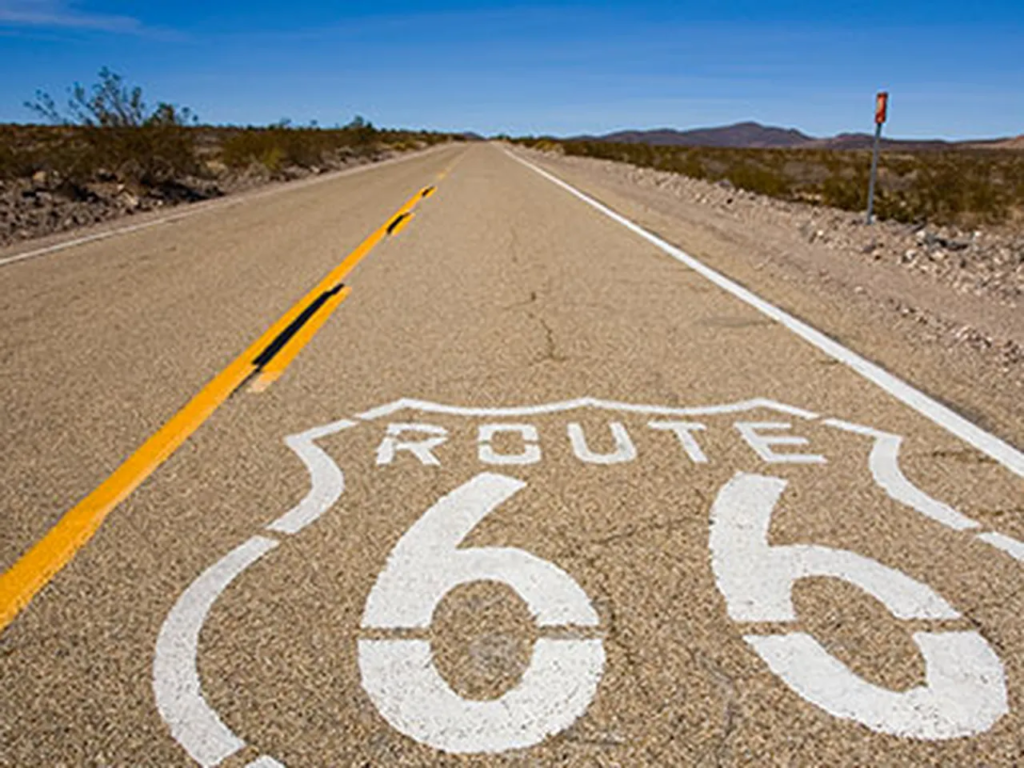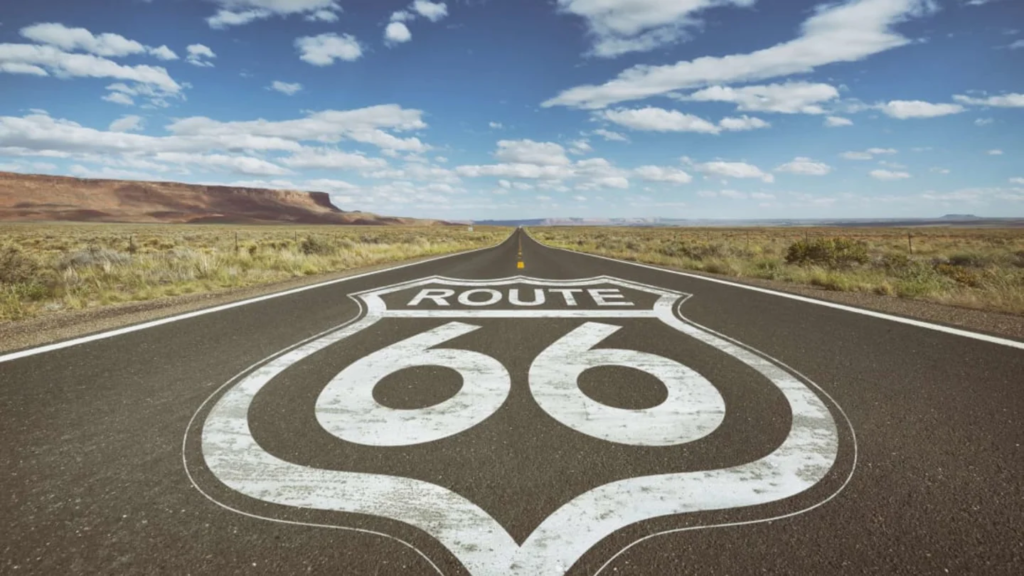
For many Americans and travelers around the world, Route 66 is more than just a highway. It is a symbol of freedom, adventure, and the American dream. Spanning more than 2,400 miles across the United States, Route 66 has played a vital role in shaping American history, culture, and road travel.
In this article, we explore the origins, significance, and transformation of Route 66—why it became known as the “Main Street of America,” and how it continues to capture the imagination of road trippers even today.
What Is Route 66?
Route 66, also known as U.S. Highway 66, was one of the original highways in the U.S. Highway System. It was officially established on November 11, 1926, and originally stretched from Chicago, Illinois, to Santa Monica, California—crossing through eight states: Illinois, Missouri, Kansas, Oklahoma, Texas, New Mexico, Arizona, and California.
Covering a total of 2,448 miles, the highway connected rural and urban communities, making it easier for Americans to travel westward, particularly during tough economic times.

The Birth of an American Legend
Route 66 was born during a time of great change in America. The 1920s saw rapid growth in automobile ownership, and with that came the need for reliable, interconnected roadways. While other highways followed a north-south route, Route 66 took a diagonal path, connecting the Midwest to the Southwest.
This made it a preferred route for thousands of travelers—especially during the Great Depression of the 1930s. Many families from the Dust Bowl region, particularly Oklahoma, used Route 66 to migrate west in search of better opportunities. This migration was famously captured in John Steinbeck’s novel The Grapes of Wrath, where Route 66 was referred to as the “Mother Road.”
Economic Lifeline for Small Towns
Route 66 quickly became an economic lifeline for small towns. Gas stations, motels, diners, and roadside attractions popped up all along the highway to serve travelers. For many communities, this road meant business, survival, and connection to the broader American economy.
Places like Seligman, Arizona; Tucumcari, New Mexico; and Winslow, Arizona became known stops along the way, offering travelers a taste of authentic Americana. Neon signs, classic cars, and retro diners became icons of the road-trip experience.
Route 66 During World War II and Postwar Boom
During World War II, Route 66 was a vital military route, helping transport troops and supplies. After the war, returning soldiers and families started using the highway for leisure travel, giving rise to the American road trip culture of the 1950s.
The postwar era also saw the growth of roadside architecture. From giant animal sculptures to drive-in movie theaters and quirky museums, the culture of “getting there” became just as important as the destination.

The Decline of Route 66
Ironically, the success of Route 66 also led to its decline. As traffic increased, so did the need for faster, safer highways. In 1956, the Federal-Aid Highway Act was passed, creating the Interstate Highway System. Over the next few decades, high-speed interstates bypassed most segments of Route 66.
By 1985, Route 66 was officially decommissioned as a U.S. highway. Many of its once-thriving towns became quiet or abandoned. Businesses that depended on passing travelers shut down. A road that once symbolized movement and opportunity began to fade.
A Revival Through Nostalgia and Tourism
Even though it was no longer an official highway, Route 66 never truly disappeared. In the late 1980s and early 1990s, local communities and preservationists began to rally around the idea of saving Route 66. Their efforts paid off.
Historic segments of the road were restored, and the National Scenic Byway designation was granted to several stretches. Museums, festivals, and retro attractions were revived to celebrate the highway’s legacy.
Today, Route 66 is one of the most popular tourist destinations in the U.S. for both Americans and international visitors. Travelers from around the globe come to experience a piece of classic Americana—whether it’s standing under a vintage neon sign, sleeping in a wigwam motel, or grabbing a burger from a 1950s-style diner.
Cultural Impact of Route 66
Route 66 has left a lasting impact on American culture. It has inspired songs, movies, TV shows, and books. The most famous of all is probably the 1946 song “(Get Your Kicks on) Route 66,” which has been covered by dozens of artists, including Nat King Cole, Chuck Berry, and The Rolling Stones.
The highway also helped shape the myth of the American West—where wide-open spaces, adventure, and personal freedom await anyone willing to take the wheel.
Route 66 Today: A Living Museum
Driving Route 66 today is like stepping into a time capsule. Many towns have preserved their mid-20th century look. You’ll find antique gas stations, vintage billboards, and old motels that still carry the spirit of the road.
Popular modern-day stops include:
- Cadillac Ranch (Texas): A public art installation of half-buried, spray-painted cars
- The Blue Whale of Catoosa (Oklahoma): A giant blue whale structure next to a small pond
- Santa Monica Pier (California): Official western terminus of Route 66
- Route 66 Museum (Clinton, Oklahoma): One of several museums dedicated to the road’s history
Thanks to passionate individuals and local businesses, the Route 66 experience remains alive and thriving.
Why Route 66 Still Matters
Route 66 represents more than just a road. It tells the story of 20th-century America—of hardship, hope, mobility, and transformation. It reflects a time when driving was a form of freedom, and when small towns thrived from community and connection.
In an age of fast air travel and GPS navigation, Route 66 reminds us to slow down, enjoy the journey, and rediscover the joys of roadside adventure. It’s a living symbol of America’s past, present, and potential for discovery.
Final Thoughts
Whether you’re a history lover, road trip enthusiast, or cultural explorer, Route 66 offers something unique. It’s not just about the distance traveled, but the stories experienced along the way.
So next time you think about a vacation or cross-country adventure, consider driving a stretch of this legendary road. After all, there’s a reason it’s called the “Main Street of America.”
Read More :- Why Top 9 best U.S. Colleges Attract the World’s Brightest Students


